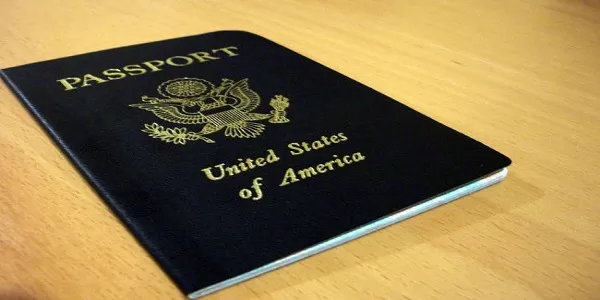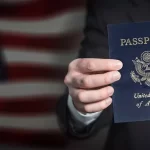Are you a Spanish citizen dreaming of exploring the land of opportunity, adventure, and endless possibilities – the United States? Look no further! We have your ultimate guide to demystify the US visa process and pave the way for your American dreams. Whether you’re yearning to study in prestigious universities, work for renowned companies, or simply embark on an unforgettable journey through America’s diverse landscapes, this blog post has got you covered. So fasten your seatbelts as we dive into everything Spanish citizens need to know about obtaining that much-coveted US visa! US VISA FOR SPANISH CITIZENS
Introduction to the US Visa Process for Spanish Citizens
If you are a Spanish citizen planning to travel to the United States, you may be wondering what type of visa you need and how to apply for it. The US visa process can seem daunting, with various types of visas available and complex application procedures. However, with the right information and guidance, obtaining a US visa can be a smooth and straightforward process.
Types of Visas Available for Spanish Citizens
The first step in understanding the US visa process is knowing which type of visa is appropriate for your purpose of travel. As a Spanish citizen, you are eligible for various types of non-immigrant visas based on your reason for visiting the United States.
1. B-1/B-2 Visitor Visa: This is the most common type of US visa issued to Spanish citizens who wish to visit the US for tourism or business purposes. The B-1 category covers business-related activities such as attending conferences or meetings, while the B-2 category allows for leisure travel such as sightseeing or visiting family and friends.
2. F-1 Student Visa: If you have been accepted into an accredited educational institution in the United States, you will need an F-1 student visa to study in the country.
3. J-1 Exchange Visitor Visa: This visa category is designed for individuals participating in exchange programs sponsored by schools, businesses, or governments. US VISA FOR ITALIAN CITIZENS
Types of Visas Available for Spanish Citizens
As a Spanish citizen, you may be considering traveling to the United States for various reasons such as tourism, business, or education. Whatever your reason may be, entering the US will require a visa. A visa is an official document issued by the United States government that allows foreign citizens to enter and stay in the country for a specific period of time. In this section, we will discuss the different types of visas available for Spanish citizens.
1. B-1/B-2 Tourist Visa:
The most common type of visa for Spanish citizens visiting the US is the B-1/B-2 tourist visa. This visa allows you to enter the US for leisure purposes such as vacationing, visiting friends or relatives, or receiving medical treatment. It also allows you to participate in activities such as sightseeing, attending conferences or conventions, and engaging in amateur sports and competitions.
2. F-1 Student Visa:
If you are planning to study in the United States as a Spanish citizen, you will need an F-1 student visa. This type of visa is specifically designed for individuals who intend to enroll in an academic program at a university or college approved by the Student and Exchange Visitor Program (SEVP). Along with your application form and required documents, you will also need to provide proof of acceptance from your chosen institution.
Step-by-Step Guide to Applying for a US Visa as a Spanish Citizen
Step 1: Determine the type of visa you need
The first step in applying for a US visa as a Spanish citizen is to determine the type of visa that best suits your purpose of travel. Some common visas for Spanish citizens include tourist visas (B-2), student visas (F-1), and work visas (H-1B). Each type of visa has its own eligibility requirements and application process, so it is important to carefully review and select the appropriate one.
Step 2: Gather necessary documents
Once you have identified the type of visa you need, the next step is to gather all the necessary documents for your application. This typically includes a valid passport, completed application form, proof of financial support, and any additional documents specific to your chosen visa category. It is crucial to ensure that all documents are current, accurate, and meet the requirements set by the US Embassy.
Step 3: Schedule an appointment at a US Embassy or Consulate
After gathering all required documents, you must schedule an interview at a US Embassy or Consulate in Spain. Appointments can be made online through the US Department of State’s website. It is recommended to schedule an appointment well in advance as wait times may vary depending on location and time of year.
Step 4: Pay application fees
At this stage, you will be required to pay non-refundable fees for both the visa application and biometric services. The cost may vary depending on your chosen visa category.
Understanding the Different Visa Requirements and Eligibility Criteria
When planning a trip to the United States, one of the most important things for Spanish citizens to understand is the visa requirements and eligibility criteria. A visa is an official document issued by the US government that allows foreign nationals to enter the country for a specific purpose, such as tourism, business, or study. The process of obtaining a visa can be complex and confusing, so it’s crucial to have a clear understanding of the different types of visas and their corresponding requirements.
1. Types of Visas:
There are two main categories of visas for non-immigrants (temporary stays) in the United States: immigrant visas and non-immigrant visas. Immigrant visas are intended for those who wish to permanently reside in the US, while non-immigrant visas are temporary permits that allow travelers to stay in the country for a specific period.
a) Non-Immigrant Visas:
Non-immigrant visas are further divided into several categories depending on the purpose of travel. Some common types include B-1 (business), B-2 (tourism), F-1 (student), H-1B (employment), J-1 (exchange visitors), and L-1A/L-1B (intra-company transferees). Each type has its own set of requirements and eligibility criteria that must be met.


